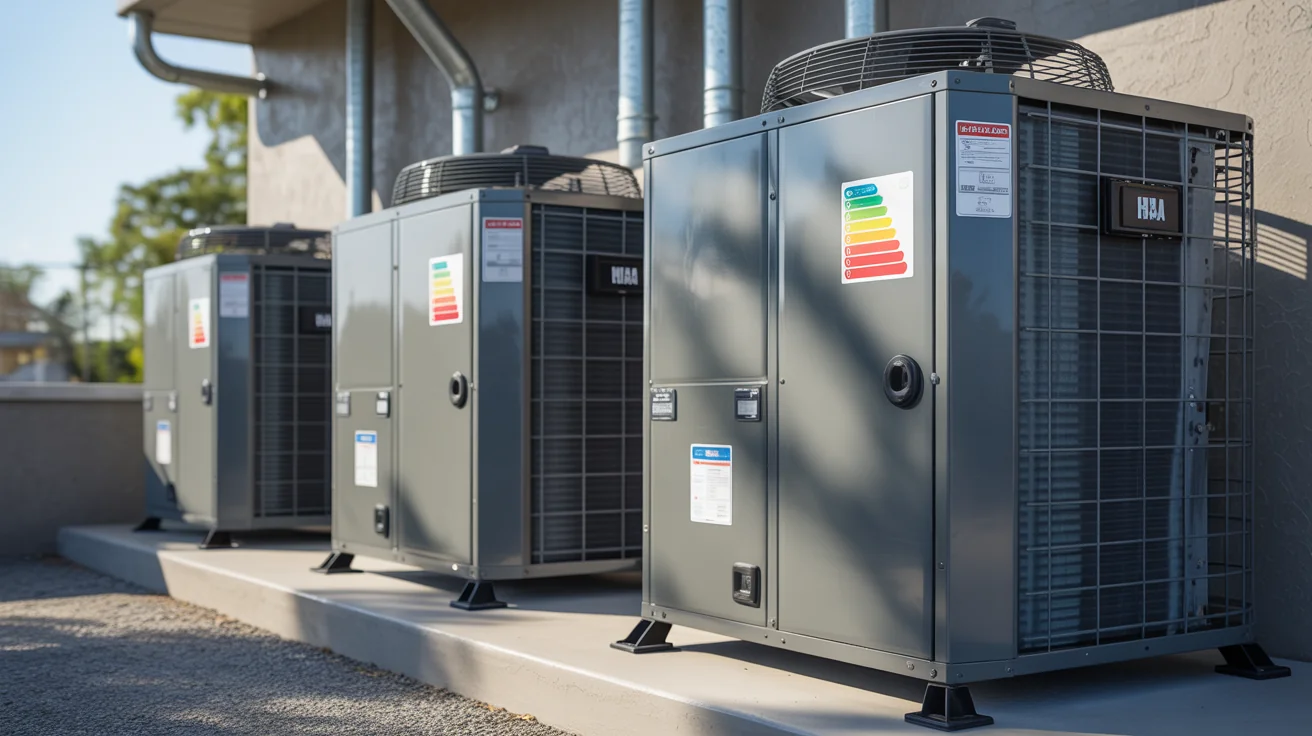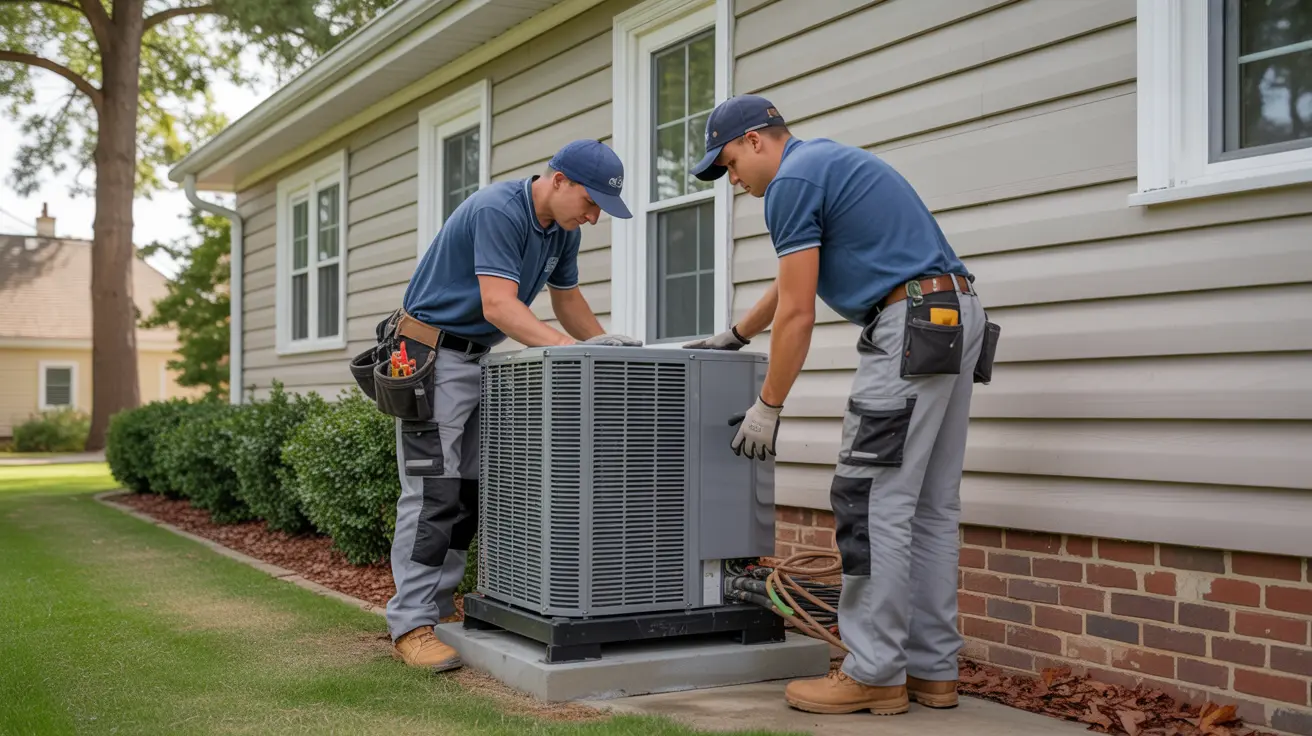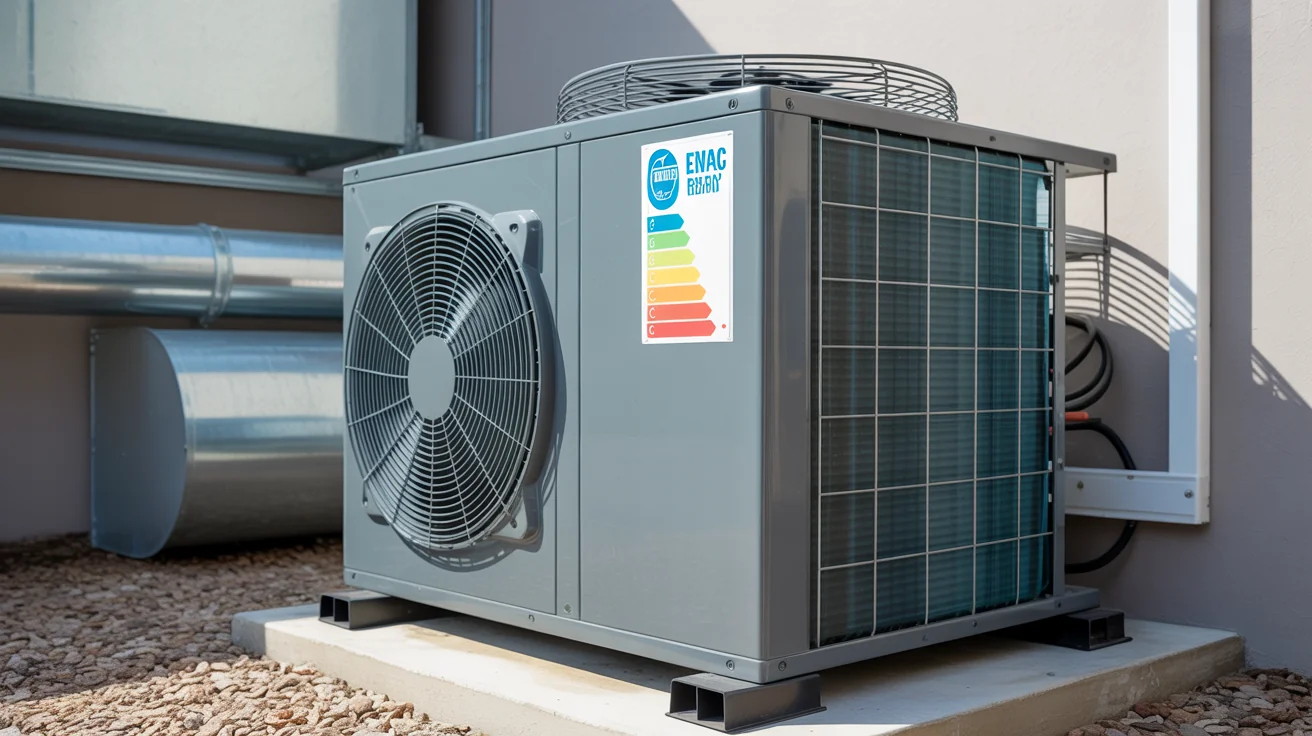HVAC Load Calculation Methods for North Texas Homes (2025): Professional Manual J Guide & Climate-Specific Factors
Master professional HVAC load calculation methods for North Texas climate. Complete Manual J guide, software tools, and climate-specific factors for optimal system sizing.

Professional HVAC Load Calculation for North Texas Climate
Related: Load Calculation
Devastating Load Calculation Failure: I walked into a 3,500 square foot home in Frisco last month where the Rodriguez family had been battling their HVAC system for three miserable years: Upstairs bedrooms stayed 8°F hotter than the main floor all summer. Humidity so bad they ran dehumidifiers that cost $150+ monthly to operate. Electric bills averaging $485 monthly during peak season despite good insulation. System running 18+ hours daily but never achieving comfortable temperatures.
The shocking discovery: The original contractor had “eyeballed” the sizing and installed a 4-ton system. Professional load calculation revealed they actually needed 5.2 tons.
The financial devastation: That 1.2-ton shortfall had cost them $8,400 in wasted energy over three years, plus countless nights of poor sleep and constant frustration.
Here’s what’s terrifying: This story repeats constantly across North Texas. Contractors who guess based on square footage, copy what was there before, or use outdated rules of thumb. In our extreme climate, sizing mistakes are expensive disasters that last 15-20 years.
Why Our Climate Demands Real Engineering
Texas climate is HVAC warfare. We hit 105°F+ for weeks with crushing humidity that makes it feel like 120°F. Then winter blindsides us with ice storms and temperature swings that drop 40+ degrees overnight.
Add our unique challenges: Relentless sun beating south and west walls for 10+ hours daily. Dust storms that clog systems faster than anywhere else. Construction practices that create homes leakier than screen doors. Clay soil movement that damages ductwork and affects building envelope.
Here’s what most contractors don’t tell you: The difference between a 3-ton and 4-ton system isn’t just initial cost—it’s $3,200+ in operating costs over the system’s life, plus the difference between a comfortable sanctuary and a home that battles you every single day.
Professional load calculations aren’t optional in North Texas—they’re the foundation of comfort, efficiency, and sanity.
The Right Way to Size HVAC Systems
Manual J is the Gold Standard
Manual J is basically the engineering bible for sizing HVAC systems. It’s the method developed by ACCA (Air Conditioning Contractors of America) that actually works - when contractors bother to use it properly.
Instead of guessing based on square footage or copying what was there before, Manual J calculates exactly what your specific home needs by looking at:
How much cooling your home actually needs, including proper humidity removal that keeps your family comfortable during muggy Texas summers. Heating requirements for those brutal but brief Texas cold snaps when temperatures plummet to the teens and your heat pump struggles. Room-by-room airflow needs so every space stays comfortable, eliminating hot bedrooms and cold living areas that plague improperly sized systems. The exact equipment capacity that matches your home’s unique characteristics rather than generic assumptions based on square footage alone.
The Science Behind Load Calculations
Heat Transfer Fundamentals:
Load calculations account for three primary heat transfer mechanisms:
- Conduction: Heat transfer through building materials
- Convection: Heat movement through air infiltration
- Radiation: Solar heat gain through windows and surfaces
Total Cooling Load Components:
Sensible heat gain includes all temperature-based loads from walls, windows, and infiltration that simply make the air hotter and require cooling capacity to address. Latent heat gain encompasses moisture-based loads from occupants, appliances, and infiltration that add humidity to the air, requiring dehumidification capacity beyond just cooling. Internal heat gains from people, lighting, appliances, and electronics add significant thermal load that varies based on household activities and schedules. Solar heat gains include both direct and indirect solar radiation effects that can dramatically increase cooling loads, especially on south and west-facing walls and windows.
North Texas Climate-Specific Factors
Design Conditions for DFW Metroplex
Summer Design Conditions (99% Design Day):
Dry bulb temperature of 101°F represents the extreme temperature that occurs or is exceeded only 1% of summer hours, establishing the peak cooling capacity needed for comfort. Wet bulb temperature of 78°F indicates the humidity-adjusted temperature that affects human comfort and equipment performance during extreme conditions. Daily temperature range of 18°F shows the cooling between overnight lows and afternoon highs, affecting thermal mass benefits and system cycling patterns. Relative humidity of 65-75% creates significant latent cooling loads requiring proper dehumidification capacity in addition to sensible cooling. Solar radiation of 285 BTU/hr/sq ft peak represents maximum solar heat gain on exposed surfaces during clear summer days.
Winter Design Conditions (99% Design Day):
Dry bulb temperature of 19°F represents the extreme cold that occurs or is exceeded only 1% of winter hours, establishing the heating capacity needed to maintain comfort during brief but bitter cold snaps. Wind speed of 15 mph average increases heat loss through infiltration and convection, requiring additional heating capacity beyond still-air calculations. Heating degree days of 2,407 annually indicate the total heating energy required over the entire winter season for planning and efficiency calculations. Ground temperature of 42°F at 4-foot depth affects basement heating loads and ground-source heat pump performance throughout the heating season.
Regional Climate Variations
Frisco & Plano (Northern DFW):
Summer conditions average 2°F higher peak temperatures than central DFW due to urban development patterns and reduced tree cover in rapidly growing areas. Winter temperatures drop 3°F lower during design conditions, requiring additional heating capacity compared to southern DFW locations. Humidity levels run 5% higher during average summer conditions due to irrigation, lake proximity, and landscaping in established neighborhoods. Wind speeds average 20% higher than protected urban areas, increasing both heating and cooling loads through enhanced air infiltration and convection effects.
Allen & McKinney (Northeast DFW): Solar gain: 15% higher due to terrain exposure. Temperature swings: 2°f greater diurnal variation. Storm frequency: 25% more severe weather events.
The Colony & Little Elm (Lake Areas): Humidity moderation: lake effect reduces temperature extremes. Latent loads: 10% higher moisture infiltration. Microclimate effects: thermal mass from water bodies.
Professional Manual J Calculation Process
Step 1: Building Envelope Analysis
Thermal Boundary Definition:
Identify conditioned vs. unconditioned spaces to establish proper heating and cooling boundaries throughout the building envelope. Map insulation continuity and thermal bridges to locate areas of heat transfer that affect load calculations and system performance. Document air barrier integrity to assess infiltration paths and their impact on heating and cooling requirements. Assess fenestration performance characteristics including window and door specifications that influence thermal loads and solar heat gain calculations.
Construction Assembly Analysis: Wall assemblies: r-values, thermal bridging, air leakage. Roof/attic systems: insulation levels, radiant barriers, ventilation. Foundation types: slab-on-grade, crawl space, basement conditions. Window specs: u-factors, shgc, orientation effects.
Step 2: Internal Load Assessment
Occupancy Analysis: People: 230 btu/hr per person (75 sensible, 155 latent). Activity levels: sedentary to active household patterns. Diversity factors: realistic occupancy schedules.
Appliance Heat Gains: Kitchen appliances: range (3,400 btu/hr), refrigerator (1,500 btu/hr). Lighting systems: led vs. incandescent heat generation. Electronics: computers, tvs, gaming systems. Water heating: recovery loads and distribution losses.
Step 3: Solar Heat Gain Calculations
Window Orientation Effects:
| Direction | Peak Solar Heat Gain (BTU/hr/sq ft) | Design Strategy |
|---|---|---|
| South | 185 | Overhangs, high-performance glass |
| Southwest | 240 | Maximum concern, shading critical |
| West | 220 | Afternoon peak, cooling challenge |
| East | 190 | Morning gain, moderate impact |
| North | 45 | Minimal direct gain, daylighting |
Shading Coefficient Factors: No shading: 1.0 (full solar exposure). Partial shade: 0.7-0.9 (trees, adjacent buildings). Overhangs: 0.4-0.8 (seasonal variation). Exterior shading: 0.2-0.5 (awnings, screens).
Step 4: Infiltration and Ventilation Loads
Air Change Rate Methodology:
Blower Door Test Results (North Texas Averages): New construction: 3.5-5.5 ach50. Existing homes (pre-2000): 8-15 ach50. Energy-efficient homes: 1.5-3.0 ach50.
Natural Infiltration Calculation: Effective Leakage Area (ELA): square inches of total leakage. Stack effect: temperature-driven air movement. Wind effect: pressure-driven infiltration. Combined effects: quadrature addition method.
Mechanical Ventilation Requirements: ASHRAE 62.2 Standard: 75 cfm minimum for typical home. Continuous operation: 24/7 fresh air needs. Energy recovery: heat/moisture transfer considerations.
Advanced Calculation Methodologies
Thermal Mass Effects
High Thermal Mass Benefits (North Texas): Temperature moderation: reduces peak loads by 15-25%. Load shifting: delays peak cooling needs 2-4 hours. Energy efficiency: reduces total cooling energy 8-12%.
Material Thermal Properties:
| Material | Thermal Mass (BTU/ft³·°F) | Time Lag (hours) |
|---|---|---|
| Concrete block | 28 | 8-12 |
| Brick veneer | 25 | 6-10 |
| Frame construction | 4 | 1-2 |
| Adobe | 35 | 10-14 |
Part-Load Efficiency Considerations
Variable Capacity Equipment: Two-stage cooling: 30-40% capacity reduction during mild weather. Variable-speed systems: 25-100% capacity modulation. Load matching: improved comfort and efficiency.
Humidity Control Requirements: Texas latent loads: 25-35% of total cooling load. Dehumidification needs: 0.008-0.012 lb moisture/lb dry air. Equipment selection: sensible heat ratio considerations.
Professional Load Calculation Software
Industry-Standard Software Solutions
Elite Software RHVAC: Comprehensive Manual J/S calculations is an important factor to consider. Advanced modeling capabilities is an important factor to consider. Integration with CAD systems is an important factor to consider. Cost: $800-1,200 annually.
Wrightsoft Right-Suite Universal: Complete ACCA Manual J, S, D, T calculations is an important factor to consider. Energy analysis integration is an important factor to consider. Residential and light commercial is an important factor to consider. Cost: $600-900 annually.
LoadSoft Load Calculation: Simplified Manual J interface is an important factor to consider. Residential focus is an important factor to consider. Cost-effective solution is an important factor to consider. Cost: $200-400 annually.
Software Selection Criteria
Key Features for North Texas: Climate data integration: local weather station data. Solar positioning: accurate sun angle calculations. Thermal mass modeling: advanced building dynamics. Equipment databases: current manufacturer specs.
Room-by-Room Load Distribution
Proper Room Load Calculations
Individual Room Requirements:
Master Bedroom (Typical 400 sq ft): Cooling load: 3,200-4,800 btu/hr. CFM requirement: 160-240 cfm. Factors: occupancy, windows, heat gain.
Kitchen (High Heat Gain): Base load: 150 btu/hr per sq ft. Appliance gains: +2,500-4,000 btu/hr. Ventilation needs: 100-300 cfm minimum.
Living Areas (Open Concept): Load density: 25-40 btu/hr per sq ft. Volume effects: cathedral ceilings +15-20%. Solar exposure: major load component.
Zoning Considerations
Multi-Zone System Benefits: Comfort control: individual room temperature management. Energy efficiency: condition only occupied spaces. Load diversity: reduce total system capacity needs.
Zone Control Strategies: Damper systems: variable air volume control. Multiple units: independent temperature zones. Ductless systems: room-by-room capacity matching.
Equipment Sizing and Selection
Proper Equipment Sizing
Cooling Equipment Sizing Rules: Never exceed 115% of calculated cooling load. Consider part-load efficiency for mild weather performance. Account for altitude effects (minimal in north texas). Factor in duct losses (10-30% typical).
Heating Equipment Sizing: Size to 100% of calculated heating load. No oversizing penalties for heating-only equipment. Heat pump considerations: backup heat needs.
Equipment Efficiency Impacts
High-Efficiency Equipment Benefits: Variable-speed compressors: better humidity control. Two-stage operation: improved comfort and efficiency. Advanced controls: load anticipation and optimization.
Load Calculation Integration: Manufacturer-specific data: actual equipment performance curves. Seasonal performance: seer2 and hspf2 ratings. Installation factors: proper refrigerant line sizing.
Common Load Calculation Errors
Critical Mistakes to Avoid
Oversizing Consequences: Short cycling: reduced efficiency and comfort. Poor humidity control: inadequate moisture removal. Higher costs: unnecessary equipment and operating expenses. Temperature swings: uncomfortable conditions.
Undersizing Problems: Inadequate capacity: cannot maintain design conditions. Continuous operation: high energy consumption. Equipment stress: premature failure and repairs. Comfort complaints: hot spots and humidity issues.
North Texas-Specific Errors
Climate Factor Mistakes: Using generic weather data: inaccurate design conditions. Ignoring humidity loads: latent heat underestimation. Solar gain errors: improper orientation calculations. Infiltration assumptions: texas wind patterns ignored.
Construction Detail Oversights: Thermal bridging: metal framing effects ignored. Attic conditions: radiant heat gain underestimated. Window performance: shgc values incorrectly applied. Duct location: unconditioned space losses ignored.
Professional Load Calculation Services
When to Hire Professionals
Complex Building Types: Multi-story homes with complex geometry. High-performance construction with advanced systems. Historic homes with unique characteristics. Commercial buildings requiring manual n calculations.
Equipment Selection Scenarios: Geothermal systems with ground loop calculations. Radiant heating with thermal mass interactions. Hybrid systems combining multiple technologies. Zoned systems with complex control strategies.
Jupitair’s Load Calculation Services
Comprehensive Analysis Package: Manual J cooling/heating loads is an important factor to consider. Manual S equipment selection is an important factor to consider. Manual D duct design is an important factor to consider. Energy efficiency recommendations is an important factor to consider.
Advanced Modeling Services: Thermal imaging analysis is an important factor to consider. Blower door testing is an important factor to consider. Duct leakage assessment is an important factor to consider. Load verification testing is an important factor to consider.
Professional Deliverables: Detailed load calculation reports is an important factor to consider. Equipment sizing recommendations is an important factor to consider. Energy analysis projections is an important factor to consider. System optimization strategies is an important factor to consider.
Energy Efficiency Integration
Load Reduction Strategies
Building Envelope Improvements: Insulation upgrades: reduce sensible loads 20-40%. Air sealing: minimize infiltration loads 15-30%. Window improvements: lower solar gains 25-50%. Radiant barriers: attic heat reduction 10-15%.
Internal Load Management: LED lighting conversion: reduce cooling loads 5-10%. Energy-efficient appliances: lower internal gains 15-25%. Smart controls: optimize equipment operation. Load scheduling: manage peak demand timing.
Cost-Benefit Analysis
Investment Priorities (North Texas):
- Air sealing: $500-1,500 investment, $200-500 annual savings
- Attic insulation: $1,200-2,500 investment, $250-600 annual savings
- Window upgrades: $5,000-15,000 investment, $400-1,200 annual savings
- HVAC efficiency: $8,000-20,000 investment, $600-1,800 annual savings
Quality Control and Verification
Load Calculation Verification
Post-Installation Testing: Temperature measurements: verify design condition performance. Airflow testing: confirm cfm delivery to each room. Humidity monitoring: validate moisture control capability. Energy consumption: compare actual vs. predicted usage.
Performance Validation Methods: Degree day analysis: normalize weather variations. Load profiling: peak demand verification. Comfort surveys: occupant satisfaction assessment. Efficiency monitoring: seasonal performance tracking.
Continuous Commissioning
Ongoing Optimization: Seasonal adjustments: control parameter refinement. Load pattern analysis: usage behavior accommodation. Equipment performance: efficiency maintenance protocols. System upgrades: technology advancement integration.
Emergency HVAC Sizing Services
When Size Matters Most
Emergency Replacement Scenarios: Equipment failure during extreme weather. Storm damage requiring immediate solutions. Permit needs for replacement systems. Insurance claims needing professional calculations.
Rapid Response Protocol
Jupitair’s Emergency Sizing Services: 24-hour calculation turnaround for critical situations. Temporary cooling solutions during analysis period. Permit-ready documentation for immediate installation. Insurance coordination for claim documentation.
Emergency Sizing Package: Simplified Manual J for immediate needs. Equipment recommendations from available inventory. Installation planning for minimal disruption. Follow-up optimization once permanent solution installed.
Professional Credentials and Standards
Industry Certifications
ACCA Certification Requirements: Manual J Certification: load calculation competency. Quality Installation: proper sizing set upation. Continuing education: technology updates and standards.
Professional Standards: NATE Certification: technical competency verification. EPA Certification: refrigerant handling needs. State licensing: texas air conditioning contractors license.
Jupitair’s Technical Expertise
Advanced Training: ACCA Manual J Certification: all senior technicians. Manufacturer training: equipment-specific expertise. Software proficiency: elite and wrightsoft certified. Continuing education: annual technical updates.
Professional Equipment: Thermal imaging cameras: heat gain visualization. Blower door testing: infiltration quantification. Duct blasting: leakage measurement capabilities. Digital instruments: precision measurement tools.
Frequently Asked Questions
Q: How accurate are online load calculators? A: Online calculators provide rough estimates but lack the precision needed for proper equipment sizing. Professional Manual J calculations consider hundreds of variables that simple calculators ignore, including thermal mass, infiltration patterns, and occupancy schedules.
Q: Can I calculate loads for my own home? A: While possible with proper software and training, accurate load calculations require extensive technical knowledge and experience. Most DIY calculations result in 20-40% sizing errors that lead to comfort and efficiency problems.
Q: How much does professional load calculation cost? A: Professional Manual J calculations range from $300-800 depending on home complexity. This investment typically saves 10-15% on equipment costs and 20-30% on operating expenses over the system’s lifetime.
Q: Do load calculations differ for heat pumps vs. air conditioners? A: Yes, heat pumps require additional heating load calculations and consideration of backup heat needs. Cold weather performance and defrost cycle impacts must be factored into North Texas installations.
Q: How often should load calculations be updated? A: Load calculations should be recalculated when making significant changes to the building envelope, adding rooms, or replacing major appliances. Generally, calculations remain valid for 10-15 years unless modifications occur.
Q: What’s the most common sizing mistake in North Texas? A: Oversizing cooling systems is the most frequent error, often by 50-100%. Contractors use “rules of thumb” instead of calculations, leading to short cycling, poor humidity control, and reduced efficiency.
Your Load Calculation Action Plan
Before Equipment Replacement
- Gather building information: Construction plans, insulation levels, window specs
- Document current problems: Hot spots, humidity issues, high bills
- Consider future changes: Home additions, envelope improvements
- Establish budget: Equipment and efficiency upgrade priorities
Professional Calculation Process
- Initial consultation: Discuss comfort goals and efficiency targets
- Building assessment: Detailed envelope and systems evaluation
- Load calculation: Manual J analysis with local climate data
- Equipment selection: Proper sizing with efficiency considerations
- Installation planning: Duct design and system optimization
Get Professional Load Calculation Services
Don’t let improper sizing cost you thousands in comfort and efficiency. Jupitair’s certified professionals provide complete load calculations that make sure optimal HVAC performance for North Texas climate conditions.
Ready for precision sizing? Call (940) 390-5676 — speak with a certified load calculation specialist. Schedule Your Analysis at jupitairhvac.com/contact. Emergency Sizing Services available for equipment failures. Complete Load Calculation Package includes manual j, s, and d analysis.
Proper sizing is the foundation of HVAC performance. Our load calculation services make sure your new system delivers optimal comfort, efficiency, and reliability for decades to come.
Professional load calculations by certified ACCA technicians | Manual J, S, and D analysis | Serving North Texas since 2008
Jupitair HVAC: Licensed & Insured, and certified for professional HVAC load calculations across Plano, Frisco, McKinney, Allen, The Colony, Little Elm, and surrounding North Texas communities.
Need Professional HVAC Service?
Our certified technicians are ready to help with any HVAC needs in North Texas




